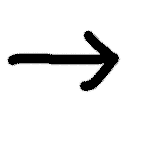>Episode 1: The Blue-Hair Backstory
Making Educated Guesses
|
The assistant walked into the ME's office and found him staring at the newspaper. "Give me a four letter word for material used to pass on parental characteristics," the ME grunted. "Gene" said the assistant. "Probably," replied the ME, "unfortunately, that won't help me with my suduko. What have you learned?" "I got on the internet and after reading the news, visiting timewasters.com and playing a game of yatzhee with someone in Japan , I found research on Blue Hair Syndrome indicating that the proportion of recessive (blue hair) alleles in the population is 0.3, or 30%." "Keen," said the ME. "Now can you determine what proportion of the population carries the blue hair gene, and what proportion can be expected to suffer from the disease itself?" |
Here is a way to visualize the alleles. Let's assume we have 10 people, and 30% of the alleles are of the recessive variety (b, for blue hair):
Assuming 30% b allele: |
||||
| 10 people |  |
 |
||
At this point I urge you to go out and buy a bag of m&m's and work out the answers to the problems below before you click on the buttons. (1 blue m&m = 1 blue allele, 1 brown m&m = 1 brown allele). Or you could use pennies and dimes, or write lists on a piece of paper. Think about how these 14 B and 6 b alleles could be paired off to answer the following questions....
|
 |
 |
 |
Copyright University of Maryland, 2007
You may link to this site for educational purposes.
Please do not copy without permission
requests/questions/feedback email: admin@mathbench.umd.edu